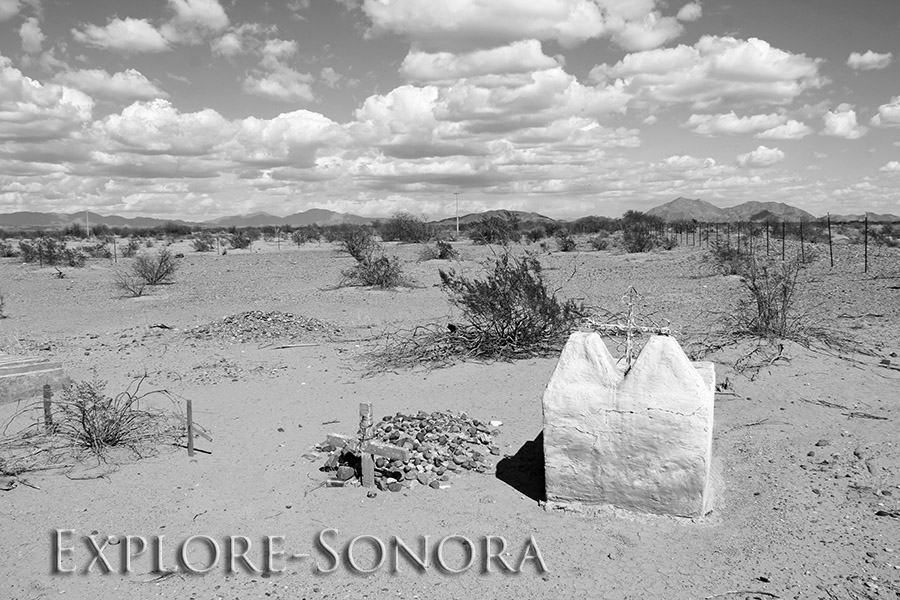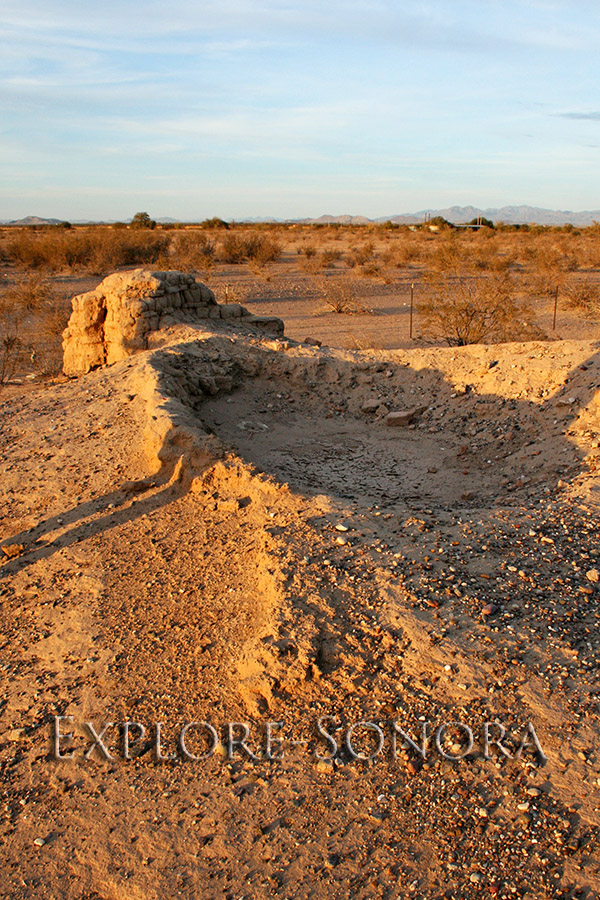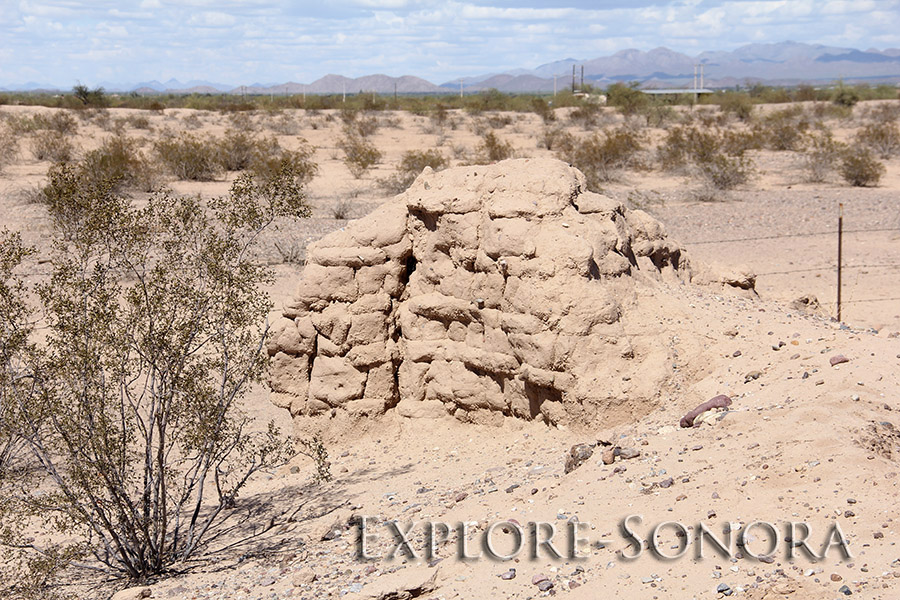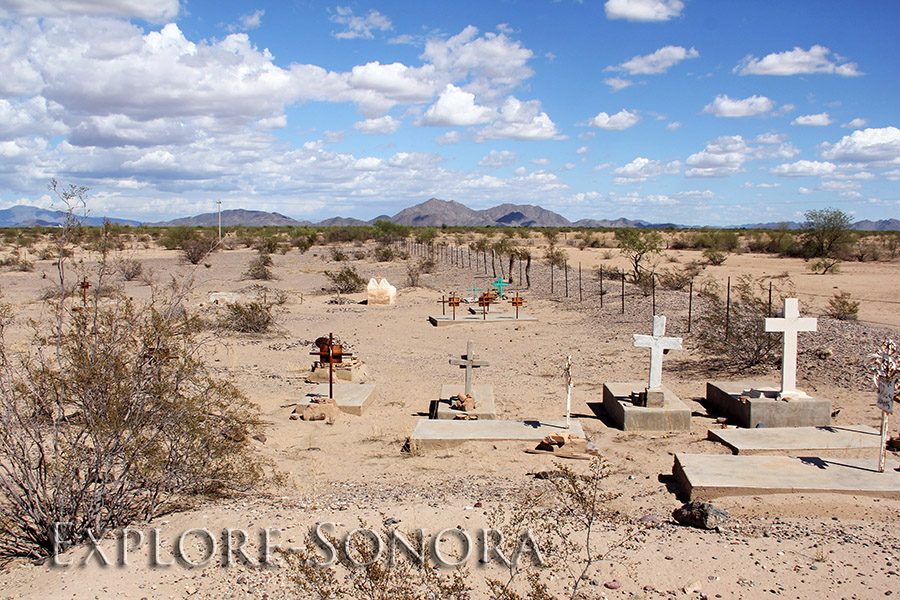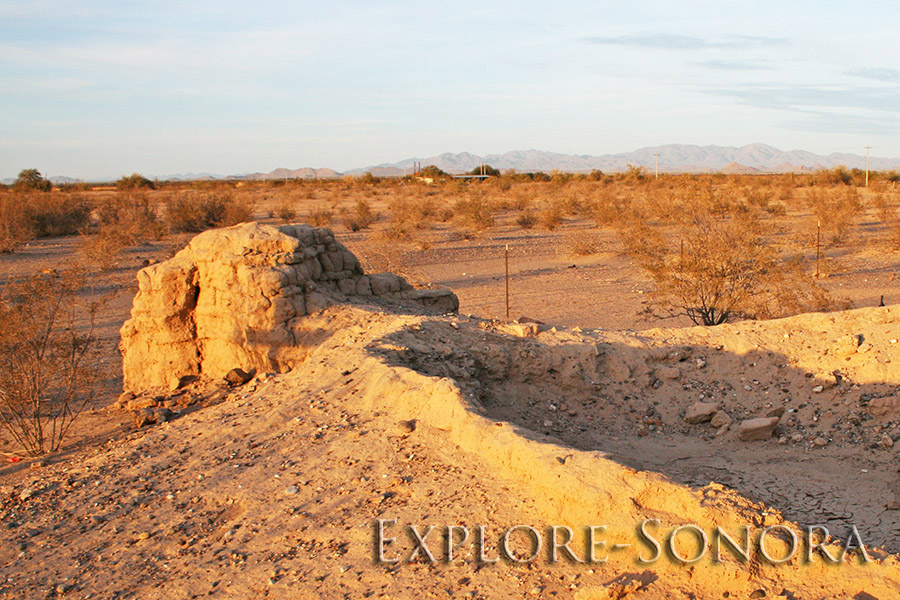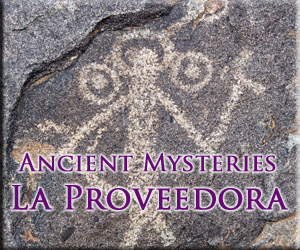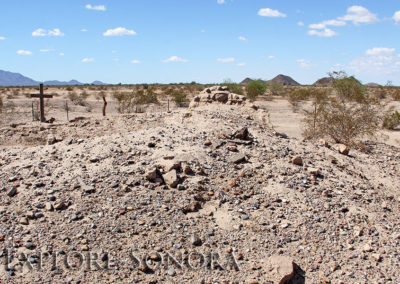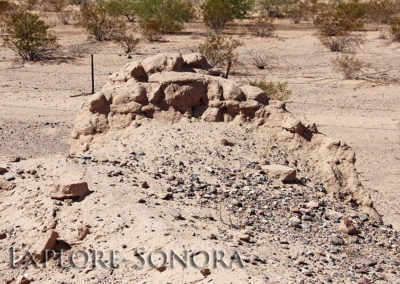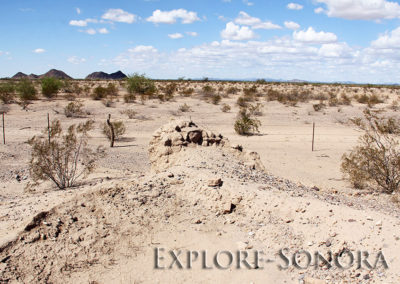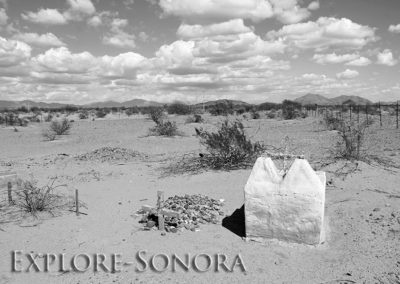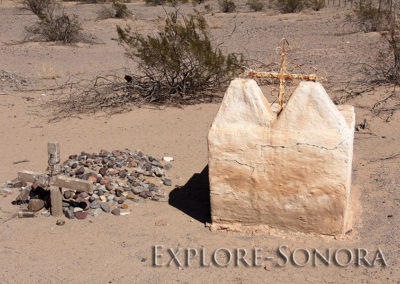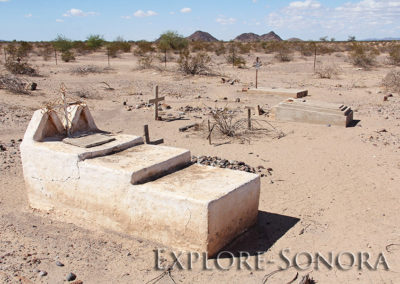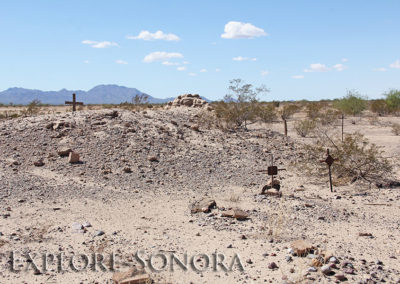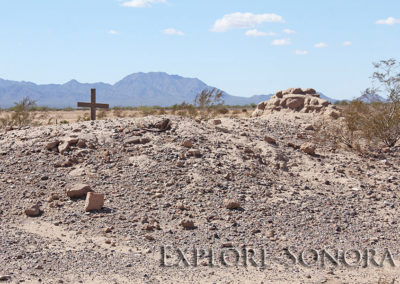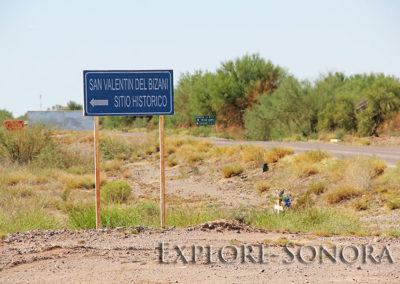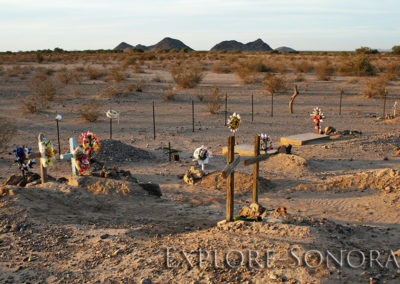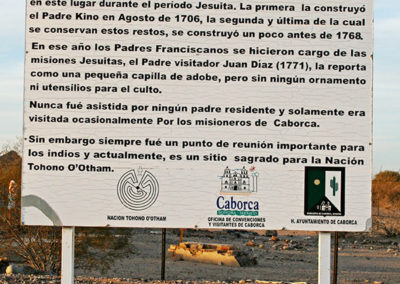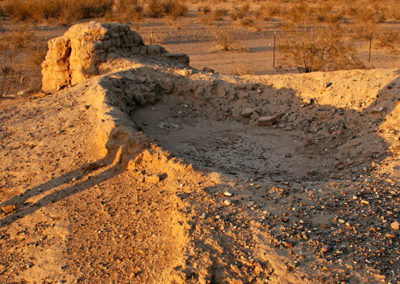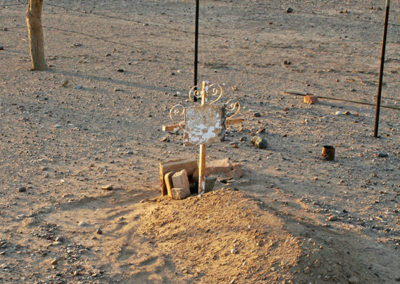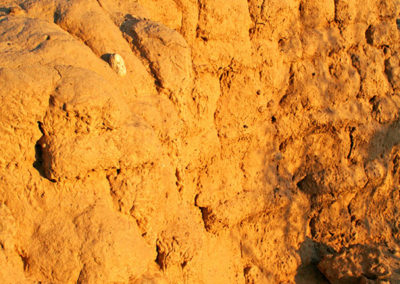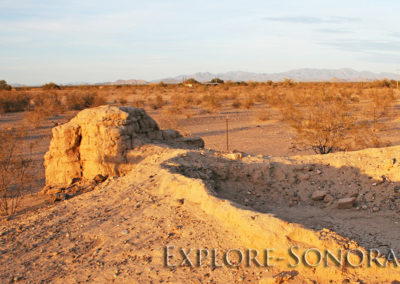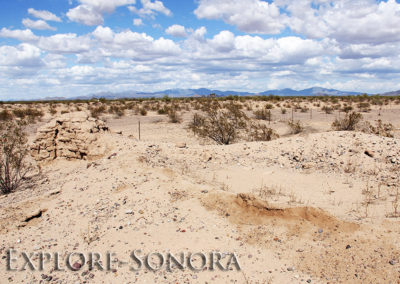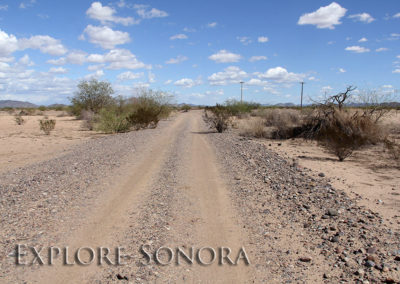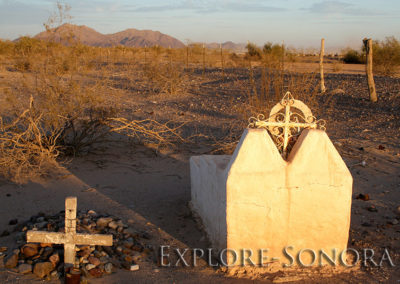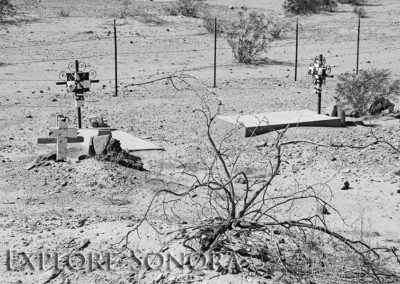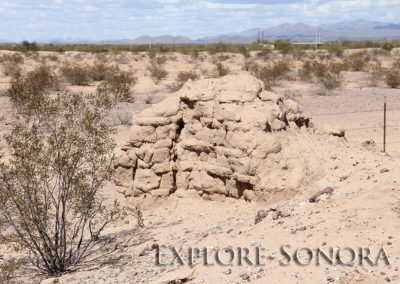Ruins of Kino Mission San Valentin del Bizani
The weathered remains of a 324-year-old Kino mission still stand in the Altar Desert west of Caborca, Sonora. The adobe walls and dirt mounds are all that remain of the mission established by Jesuit missionary Father Eusebio (1645 – 1711) in 1694.
The mission was established as a visita, a subordinate church to La Purísima Concepción de Nuestra Señora de Caborca mission. Originally named San Juan de Bisaning, or Busanic, Kino blessed the mission on February 14, 1694 on the feast day of Saint Valentine. The word Bizani is an adaptation of the O’odham word Vi’isin, which means “that which remains.”
The mission church and a home for the priest were constructed in 1706, and both buildings were in existence as late as 1772. Today, the adobe walls and dirt mounds where the structures stood are still visible, and it is also the site of a small Tohono O’odham cemetery.
A sign posted at the site reads::
“On February 14, 1694, Father Eusebio Francisco Kino came to this place accompanied by Lieutenant Juan Mateo Mange and baptized it with the name of Saint Valentin, on that saint’s day.
The name in Papago is Vi’isin and means “What remains”
Two adobe chapels and roof terraces were built in this place during the Jesuit period. The first was built by Father Kino in August 1706, the second and last of which these remains are conserved, was built shortly before 1768.
In that year the Franciscan Fathers took charge of the Jesuit missions. Visiting priest Father Juan Diaz reported in 1771 that it was a small adobe chapel, but without any ornaments or utensils for the congregation.
It was never assisted by any resident parent and was only visited occasionally. For the missionaries of Caborca.
However, it was always an important meeting point for the Tohono O’odham Nation.”
The ruins and cemetery are in the desert near highway 15, just south of the hills located approximately 10 miles west of Caborca.
A visit to the location of the San Valentin del Bizani Mission is not only interesting, but can also be calming and regenerative. It is a quiet, peaceful place where you can develop a feel for how small the original Kino mission church structures were, while seeing the actual adobe material used to construct the buildings.
And in the hushed desert stillness, you can reflect on its history and cultural significance of this and other Kino missions. In the same place where Father Kino once stood, seeing the same natural vistas he once viewed.

